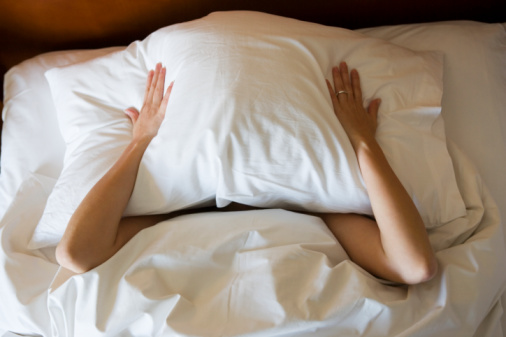Snoring may be benign, or it may be a sign of a serious problem
By Consumer Reports | March 6, 2017 | WashingtonPost.com
 Do you snore, or share a bed with a snorer? About 37 million Americans regularly make grunting, whistling, choking, snorting and/or buzz-saw-like sounds, according to the National Sleep Foundation.
Do you snore, or share a bed with a snorer? About 37 million Americans regularly make grunting, whistling, choking, snorting and/or buzz-saw-like sounds, according to the National Sleep Foundation.
Snoring, which occurs when the airway narrows or is partly blocked during sleep — often thanks to nasal congestion, floppy tissue, enlarged tonsils or the effects of alcohol — can be more than “a benign annoyance,” says Charlene Gamaldo, medical director of the Johns Hopkins Sleep Disorders Center in Baltimore.
Not only can your snoring ruin your partner’s shut-eye, it is also a red flag for obstructive sleep apnea, or OSA. OSA is marked by noisy stops and starts in breathing during sleep, and it raises risks of cardiovascular disease, stroke, cardiac arrhythmia and hypertension. According to the American Academy of Sleep Medicine, 34 percent of men and 19 percent of women who routinely snore have OSA or are at risk for it.
Start with lifestyle steps
Even if you’re unsure whether your snoring is the result of OSA or of benign, or primary, snoring, Consumer Reports’ experts suggest starting with these steps:
Ease a stuffy nose. Over-the-counter nasal strips “may help keep nasal passageways open,” says Romy Hoque, an assistant professor of neurology at Emory University School of Medicine in Atlanta. You can also rinse your nose with an OTC saline solution or stand in a steamy shower.
Elevate your head. You can buy a special pillow to lift your chin and keep your tongue from blocking the back of your throat as you sleep. But any wedge-shaped pillow will do, Hoque says.
Sleep on your side. To keep from rolling onto your back during the night, which triggers snoring, place a bolster or a body pillow against your back.
Avoid alcohol for four hours before bed. Alcohol relaxes your airway muscles, constricting airflow.
Quit smoking. Tobacco smoke can irritate throat membranes.
Lose excess weight. “Fat around the neck compresses the upper airway and impedes airflow,” says Raj Dasgupta, an assistant professor of clinical medicine at the University of Southern California in Los Angeles. OSA has been associated with a neck circumference greater than 17 inches in men and greater than 16 inches in women.
You might also consider the tongue exercises described below.
When you need more help
If lifestyle strategies don’t make a big difference, see your doctor, a sleep specialist or an otolaryngologist, who may recommend an overnight sleep test to see whether you have OSA.
For primary snoring or mild to moderate OSA, an oral appliance worn during sleep shifts the lower jaw and tongue forward, helping to keep the airway open. Such devices are available over the counter, but our experts recommend one that’s customized for you, which is usually covered by insurance. In 2015, the American Academy of Sleep Medicine and the American Academy of Dental Sleep Medicine noted that there is moderate evidence they improve quality of life.
The gold-standard treatment for moderate to severe OSA is continuous positive airway pressure, or CPAP, which delivers air to your airway during sleep to keep it open. A 2016 study in the New England Journal of Medicine found that CPAP helped with daytime sleepiness and snoring (but not with cardiovascular risks) in people followed for an average of almost four years.
When other methods fail or are intolerable — CPAP adherence may be as low as 50 percent — options may include surgical procedures that remove excess tissue in the nose, mouth or throat.
A newer procedure, hypoglossal nerve stimulation, uses a small device implanted in the chest to help control the movement of the tongue when it blocks the airway. A 2014 study reported that after 12 months of use, this approach reduced temporary stops in nighttime breathing by 68 percent. But it can cost up to $40,000 and is usually not covered by insurance.
The tongue workout
A study in the journal Chest found that people who performed tongue exercises daily for three months cut their snoring frequency by 36 percent compared with those who didn’t do the exercises. Interested? Try these three times a day, repeating each 20 times:
1. Push the tip of the tongue against the roof of the mouth and slide the tongue backward.
2. Suck the tongue up against the roof of the mouth and press the entire tongue against the roof of the mouth.
3. Force the back of the tongue against the floor of the mouth while keeping the tip of the tongue in contact with the bottom front teeth.
Copyright 2017.
Consumers Union of United States Inc.




